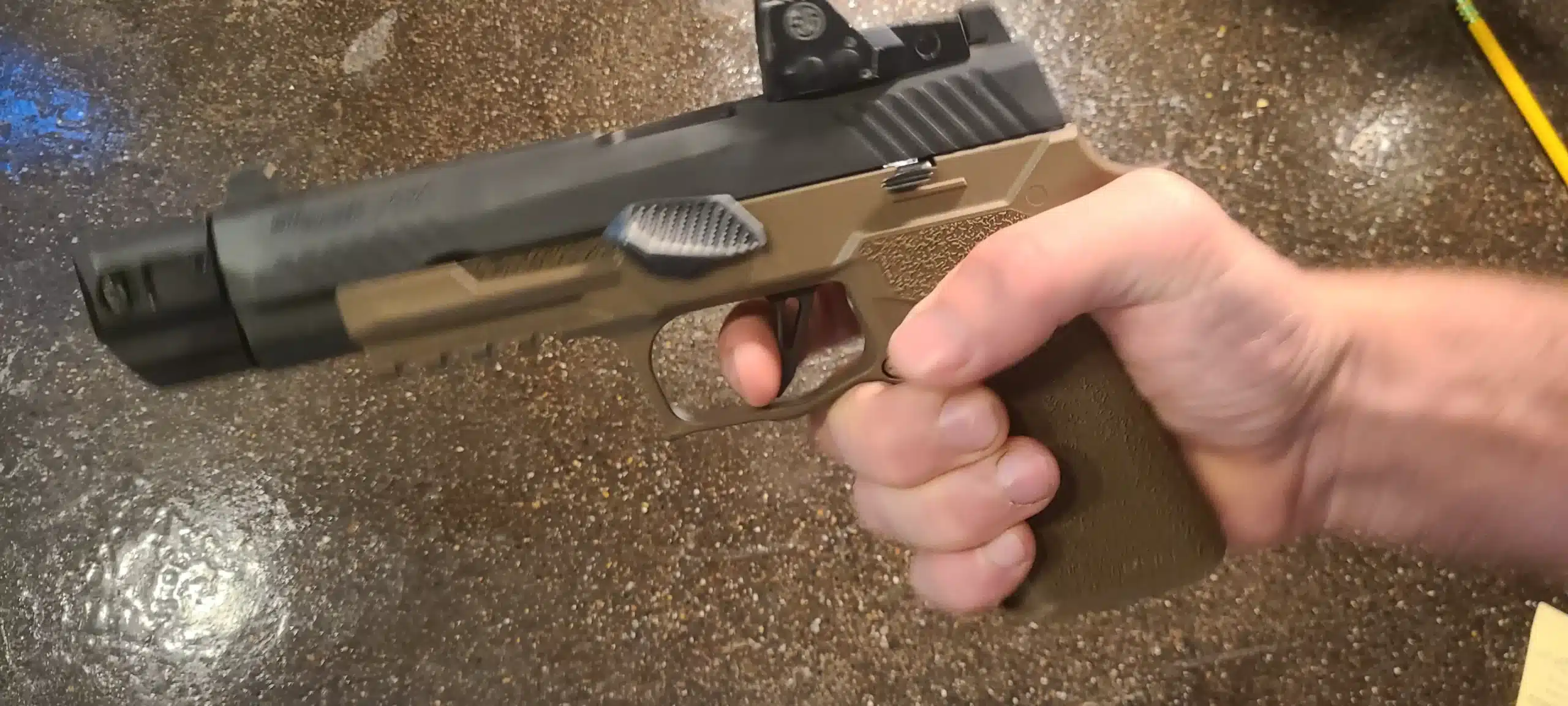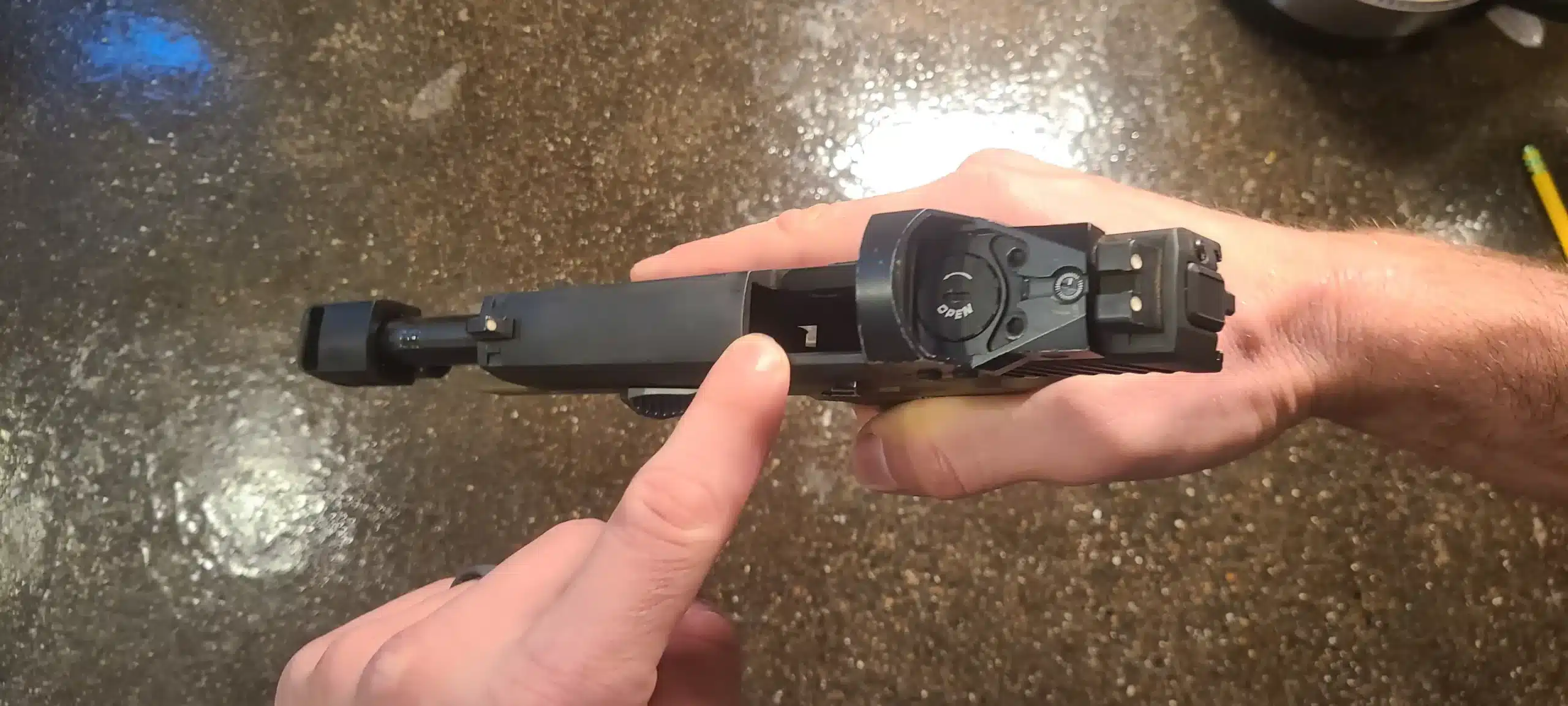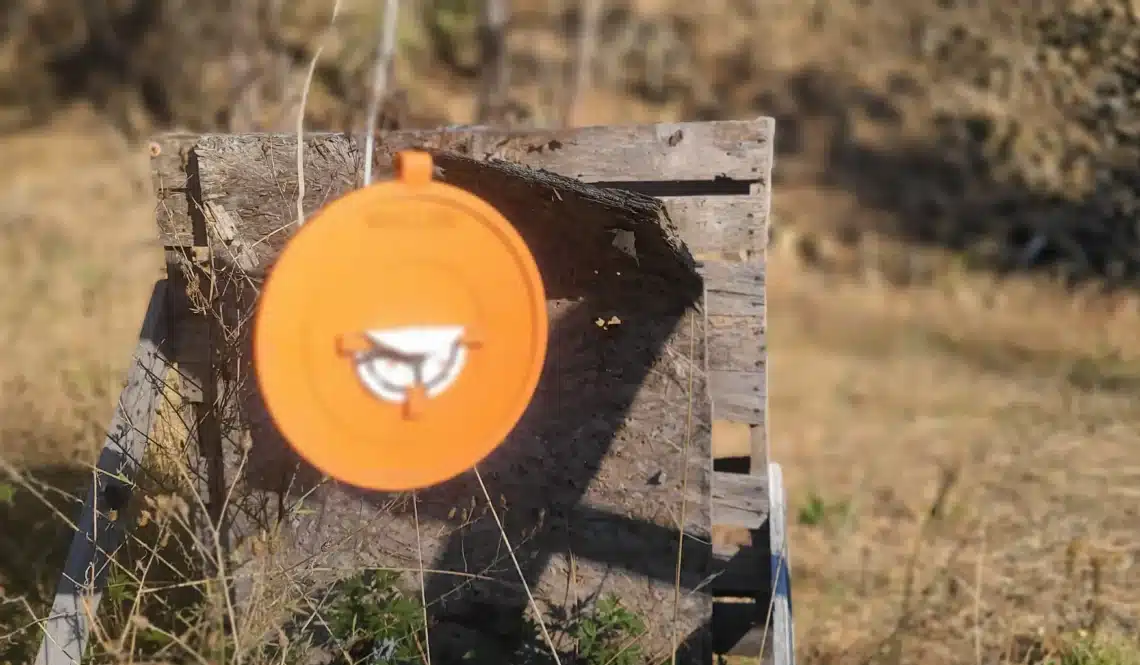Injuries can postpone your training, setting you back weeks or even months (or worse, the rest of your life). Staying safe and injury-free is critical for continuous improvement. Dry fire training can eliminate these risks, helping you maintain peak performance.
Understanding the Risks of Live Fire Training
Nothing can replace live fire training. It is the best way to hone your shooting skills, but it comes with risks that can lead to various injuries. These range from minor aches and pains to more severe conditions that impact your ability to train or compete.
For example, repeated firing, especially with handguns or high-caliber firearms, causes strain on the wrist. This strain comes from the force needed to manage recoil and can easily lead to carpal tunnel syndrome over time. Hearing damage is another potential risk inherent to live-fire training. Gunshots produce a sound level exceeding 140 decibels, which is more than enough to cause immediate hearing damage without proper protection.
Repetitive motion injuries (RMIs) are also common in shooters who train extensively. These injuries are due to the constant repetition of shooting mechanics like aiming, gripping, and pulling the trigger. RMIs can affect multiple body parts, including the hands, wrists, elbows, and shoulders.
There is also always the possibility of a negligent discharge. Practicing necessary skills, especially drawing your firearm, always carries the potential for a serious accident. Luckily, dry fire training significantly reduces these risks.
How Dry Fire Training Mitigates These Risks

Dry fire training eliminates recoil, allowing you to practice shooting mechanics without subjecting your body to a live round’s repetitive, jarring force. Your risk of muscle strains and joint injury is reduced, and you can have longer, more frequent training sessions.
It also prevents hearing damage since it doesn’t involve any loud gunshots. This helps you avoid hearing damage and lets you focus on your form, technique, and mental concentration without any noise distraction.
Mistakes also happen. Even more so when you are fatigued or under stress. During live fire practice, these mistakes can be life-altering or fatal. Whenever firearms are present, there will always be a risk of negligent discharge. Done properly, however, dry fire training diminishes, if not eliminates, this risk. This enables safe, repetitive practice of skills like drawing, aiming, and trigger control in a controlled environment without the fear of making a dangerous mistake.
There are downsides to dry fire training. It is less dynamic, and the range of scenarios you can train is limited by having to reset the trigger after each shot. Systems like DryFireMag, however, remove these constraints. It eliminates the need to re-rack the slide, providing a realistic trigger feel by replicating the weight and break of your trigger pull. This helps build the right muscle memory and keeps you focused on training. It also opens up a whole new set of dry fire training possibilities, like engaging multiple targets or practicing follow-up shots.
Essential Safety Protocols for Dry Fire Training
While dry fire training poses significantly less risk than live fire training, you still need to take steps to ensure a safe training environment.
Initial Check

Before starting any dry fire session, always make sure your firearm is unloaded. Remove the magazine and check the chamber visually and physically using your finger. You also should remove any live ammunition from your training area.
Double Check
Even if you’re certain the firearm is unloaded, check it again. Double-checking helps prevent complacency and greatly reduces the risk of a negligent discharge. You should also make it a habit to check your firearm’s status at the beginning and end of every training session, and anytime you put it down and pick it back up.
Designate a Safe Area for Dry Fire Training
Set aside a specific area in your home or training location for dry fire practice. This area should be free from distractions and should not be in line with anything of value or any living being. Also, make sure there is a safe backstop behind your training target. This can be a solid wall or area where a bullet could safely pass if a live round were accidentally discharged. You should also limit access to the training area and inform people about your training schedule to prevent interruptions and avoid unexpected entries into the area.
Live fire training is a great way to practice your shooting skills, but it comes with risks. If you want to become a better shooter, consider dry fire practice as a safer alternative. It helps reduce the risks associated with live fire practice and still allows you to refine your skills. Dry fire practice is also better when you use DryFireMag. Because you don’t need to reset the trigger, you can develop better muscle memory and practice your shooting skills more effectively.
Take your dry fire training to the next level. Learn more about DryFireMag.


